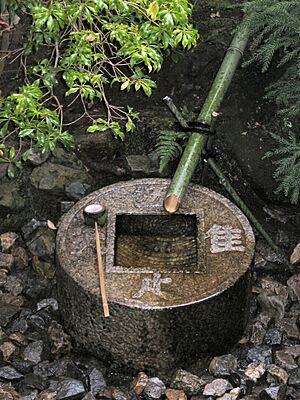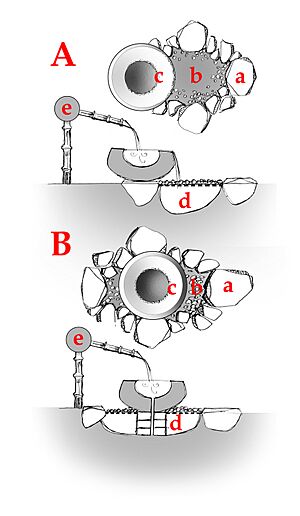Tsukubai facts for kids
A tsukubai (say "tsoo-koo-bye") is a special stone washbasin found in Japan. People use it to clean their hands and rinse their mouths before entering a holy place. This cleaning is a way to purify themselves. You often see tsukubai at the entrance to a tea ceremony garden or a Buddhist temple.
The word tsukubai comes from the Japanese verb tsukubau. This means "to crouch" or "to bow down". It shows respect and humility. Guests at a tea ceremony crouch down to wash their hands in the tsukubai. They do this in the tea garden (roji) before going into the tearoom.
What a Tsukubai Looks Like
Most tsukubai are made from stone. They usually have a small ladle nearby for people to use. Sometimes, water flows into the basin through a bamboo pipe. This bamboo pipe is called a kakei.
The Famous Ryōan-ji Tsukubai
One very famous tsukubai is at the Ryōan-ji temple in Kyoto, Japan. A powerful lord named Tokugawa Mitsukuni gave it to the temple.
This tsukubai has special kanji (Japanese characters) carved on its surface. If you read each character by itself, they don't mean much. But if you read each character with the shape of the central bowl (which looks like the kanji for "mouth" or kuchi), they form a special message.
The characters become:
- Ware (吾) = I
- Tada (唯) = only
- Taru (足) = plenty
- Shiru (知) = know
Together, this means "I only know plenty." It's like saying "what you have is all you need." Another way to understand it is "learn only to be happy with what you have." This message fits with the basic ideas of Buddhism. It teaches that having too many things is not important.
See also
 In Spanish: Tsukubai para niños
In Spanish: Tsukubai para niños



